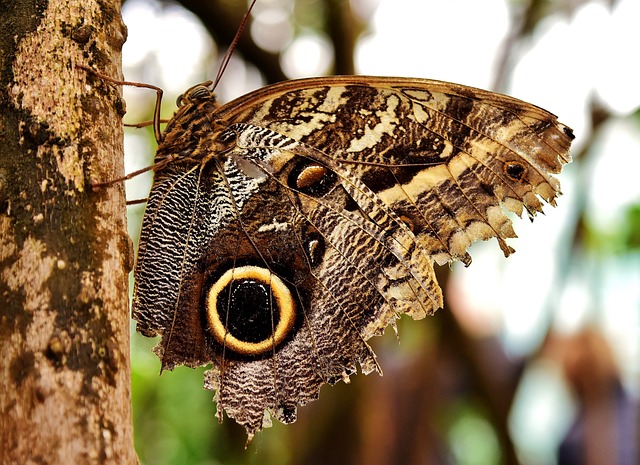Psocid infestations pose significant threats to books, papers, and archival materials, leading to irreversible damage if left unattended. Effective psocid control plans emphasize early detection through regular inspections and monitoring. Once identified, a combination of physical removal and targeted chemical treatments (e.g., heat decontamination, insecticidal sprays) is crucial for management and eradication. A comprehensive plan involves identifying specific psocid species, assessing infestation extent, understanding life cycles, and using a multi-pronged strategy including mechanical, chemical, and biological control methods. Regular monitoring, maintenance, and adjustments are vital for prompt detection of recurring infestations. Implementing these plans in libraries and archives protects rare books and documents by creating an environment hostile to pests through controlled humidity, regular cleaning, and specialized products, ensuring their preservation for future generations.
In libraries, archives, and homes, book and paper infestations by psocids (book lice) are a common problem. These tiny insects can cause significant damage to valuable collections over time, leading to costly restoration efforts or even irreplaceable loss. This article guides you through understanding psocid infestations, their impact on books and papers, and developing effective psocid control plans. We explore targeted treatments for infested items and storage areas, offering practical steps for implementation and maintenance to ensure long-lasting protection.
Understanding Psocid Infestations and Their Impact on Books and Papers
Psocid infestations can significantly impact books, papers, and storage areas, causing substantial damage if left unchecked. These tiny insects, known as book lice or psocids, are notorious for infesting rare and historical texts, as well as common library and archival materials. They feed on starches found in paper and binding materials, leading to discoloration, pitting, and eventual destruction of the affected items. Psocid control plans are essential to mitigate these issues, focusing on identifying infestations early, implementing stringent hygiene practices, and employing targeted treatments such as heat or cold decontamination, insecticidal sprays, or dusts.
Regular inspections and monitoring are crucial components of any psocid control plan. This involves visually inspecting books and papers for signs of infestation, such as small insects or webbing, as well as checking storage areas where conditions might favor their proliferation. Once an infestation is detected, quick action is necessary to prevent its spread. By combining physical removal of infested items with chemical treatments tailored to the severity of the infestation, institutions can effectively manage and control psocid populations, safeguarding valuable collections for future generations.
Developing a Comprehensive Psocid Control Plan
Developing a comprehensive psocid control plan is essential for effective management of book, paper, and storage area infestations. The first step involves identifying the specific psocid species present, as different species require tailored treatment strategies. This includes assessing the extent of the infestation, understanding the life cycle of the pests, and recognizing their preferred habitats within the storage areas. Once identified, a multi-pronged approach can be implemented, combining mechanical, chemical, and biological control methods.
Mechanical measures such as regular cleaning, vacuuming, and physical removal of infested materials are crucial. Chemical interventions should be targeted and strategic, using approved pesticides in low concentrations to minimize environmental impact while effectively eliminating psocids. Additionally, introducing natural predators or utilizing insect growth regulators can offer long-term, eco-friendly solutions. Regular monitoring and maintenance are vital components of the plan, ensuring prompt detection of any recurring infestations and allowing for adjustments to the control strategy as needed.
Targeted Treatments for Books, Papers, and Storage Areas
In the realm of library and archival management, maintaining optimal conditions for books, papers, and storage areas is paramount to preserve these valuable resources for future generations. Implementing targeted treatments and psocid control plans is essential to mitigate the risks posed by pests like book lice, mites, and other insects that can cause significant damage. These treatments involve a multifaceted approach, including environmental adjustments, regular inspections, and the use of specialized products designed to deter and eliminate infestations without causing harm to the materials.
For books and papers, this may entail using acid-free tissue paper, protective covers, and controlled humidity levels to create an inhospitable environment for pests. Storage areas require regular cleaning, proper ventilation, and the utilization of pest-repelling substances to prevent reinfestation. By integrating these targeted treatments into their management strategies, institutions can effectively safeguard their collections, ensuring their longevity and accessibility for years to come.
Implementation and Maintenance: Ensuring Long-Lasting Protection
Implementing targeted treatments for books, papers, and storage areas requires a well-devised psocid control plan. This involves assessing the specific pests and their habitats, followed by selecting appropriate treatment methods such as heat, cold, or chemical applications. Regular maintenance is key to ensuring long-lasting protection. Monitoring and inspecting these areas periodically helps detect early signs of infestation, allowing for prompt action.
A consistent cleaning routine, including vacuuming and dusting, is essential. Sealing entry points and maintaining proper humidity levels further strengthens the defense. Regular updates to psocid control plans based on environmental changes and new pest insights ensure effectiveness over time. This proactive approach not only preserves valuable materials but also contributes to a healthier, more controlled environment.
In conclusion, effective psocid control begins with understanding their unique behaviors and the impact they have on valuable books, papers, and storage areas. By developing a comprehensive psocid control plan, including targeted treatments for these specific environments, you can protect your collections from these destructive insects. Consistent implementation and maintenance of these plans are essential to ensure long-lasting protection, preserving your resources for future generations.
